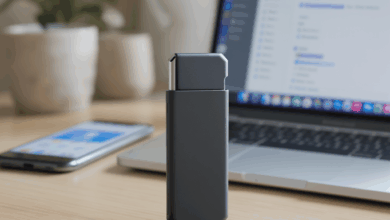Comprehensive Guide to Blockchain Cybersecurity Strategies

Preparing for Blockchain Cybersecurity Implementation
1. Understand the Basics of Blockchain and Cybersecurity
- Familiarize yourself with what blockchain technology is: a decentralized ledger that records transactions securely.
- Learn basic cybersecurity concepts such as cryptography, identity management, and threat detection.
- Tip: Use beginner-friendly resources or videos to grasp these concepts.
2. Gather the Necessary Tools and Resources
- Ensure you have access to a blockchain development environment or platform (e.g., Ethereum, Hyperledger).
- Obtain quantum-resistant cryptographic libraries (e.g., lattice-based cryptography libraries).
- Choose AI-based security tools or platforms that support blockchain threat detection.
- Prepare a decentralized identity management framework or provider.
- Checklist:
- Blockchain platform access
- Quantum-resistant cryptography toolkit
- AI threat detection software
- Decentralized identity management tools
3. Set Up Your Work Environment
- Install required software and dependencies on your computer or server.
- Verify internet connectivity and secure network settings.
- Backup any existing blockchain data to prevent loss during testing.
- Warning: Avoid using public Wi-Fi for sensitive blockchain security setup to prevent interception.
4. Review Regulatory and Compliance Requirements
- Research the latest regulations relevant to blockchain cybersecurity in your jurisdiction.
- Understand mandatory audit requirements for smart contracts and data protection laws.
- Plan to document your compliance steps throughout implementation.
Implementing Blockchain Cybersecurity Strategies Step-by-Step
1. Integrate Quantum-Resistant Cryptography
a. Select a Quantum-Resistant Algorithm
- Choose algorithms like lattice-based cryptography that are resistant to quantum attacks.
- Confirm compatibility with your blockchain platform.
b. Implement the Algorithm
- Replace or augment existing cryptographic functions with quantum-resistant versions.
- Test cryptographic operations locally to verify correct integration.
c. Validate Security
- Use cryptographic verification tools to confirm data integrity and encryption strength.
- Success Check: Transactions should be encrypted and verifiable without errors.
2. Deploy AI-Driven Threat Detection
a. Configure AI Security Tools
- Set up AI software to monitor blockchain transactions and network traffic.
- Train AI models if necessary with historical data to recognize normal vs. anomalous activity.
b. Enable Real-Time Monitoring
- Activate continuous analysis to detect threats such as unusual transaction patterns or unauthorized access attempts.
c. Respond to Alerts
- Establish protocols for investigating and mitigating AI-flagged threats promptly.
- Tip: Integrate alerts with your security team’s communication channels.
3. Implement Decentralized Identity Management
a. Choose a Decentralized Identity Framework
- Select frameworks like DID (Decentralized Identifiers) or self-sovereign identity platforms.
b. Set Up User Identity Controls
- Allow users to create and control their digital identities securely without centralized intermediaries.
c. Enforce Access Policies
- Apply zero-trust principles by requiring continuous authentication and strict access controls.
4. Adopt Hybrid Blockchain Solutions (Optional Advanced Step)
- Combine public and private blockchain features for optimized security and control.
- Configure permissions and data visibility according to organizational needs.
Verifying and Troubleshooting Blockchain Cybersecurity Implementation
1. Verify Cryptographic Enhancements
- Use blockchain explorer tools to inspect transaction encryption.
- Confirm that quantum-resistant algorithms are applied by reviewing cryptographic metadata.
- Troubleshoot: If encryption fails, re-check algorithm integration and dependencies.
2. Test AI Threat Detection Effectiveness
- Simulate known attack patterns or anomalies to ensure AI detects and reports them.
- Review AI logs and alerts for accuracy.
- Troubleshoot: If AI misses threats, retrain models or adjust sensitivity settings.
3. Confirm Decentralized Identity Functionality
- Test identity creation, authentication, and access control processes with multiple users.
- Ensure users can manage their identities without centralized authority interference.
- Troubleshoot: If access failures occur, verify policy configurations and identity registry status.
4. Monitor Regulatory Compliance
- Conduct smart contract audits and security reviews regularly.
- Keep documentation updated to reflect compliance with evolving regulations.
5. Regular Maintenance and Updates
- Schedule routine checks for cryptographic updates, AI model retraining, and identity system upgrades.
- Warning: Outdated security components can become vulnerabilities.
Checkpoint Summary:
– You have prepared your environment and tools.
– Quantum-resistant cryptography is implemented and verified.
– AI-driven threat detection is operational and tested.
– Decentralized identity management is configured and functional.
– Ongoing compliance and maintenance plans are in place.
By following this step-by-step guide, even beginners can confidently implement robust blockchain cybersecurity strategies that address modern threats and future-proof their decentralized systems. Remember, consistent monitoring and updates are key to maintaining strong security over time.
Sources for Further Reading:
– Quantum-Resistant Cryptography
– AI in Blockchain Security
– Decentralized Identity Management
– Blockchain Regulatory Compliance
Estimated time to complete this guide: 4-6 hours depending on prior experience and system setup.
Difficulty level: Moderate – patience and attention to detail will help you succeed.
Advanced Cryptographic Implementations and Security Hardening
Implementing Multi-Party Quantum-Resistant Key Management
Step 1: Design Threshold Cryptography Schemes
- Utilize threshold lattice-based cryptography to distribute private keys across multiple parties.
- Define threshold parameters (e.g., (t, n) where t is the minimum number of parties to reconstruct the key).
Step 2: Integrate Secure Multi-Party Computation (MPC)
- Deploy MPC protocols to perform signing operations without revealing individual shares.
- Leverage frameworks like MP-SPDZ or SCALE-MAMBA adapted for quantum-resistant primitives.
Step 3: Harden Key Storage and Transmission
- Use hardware security modules (HSMs) or secure enclaves to store key shares.
- Encrypt inter-node communication with post-quantum secure channels.
Warning: Improper setup of threshold parameters can compromise fault tolerance or security. Test extensively in isolated environments.
Layered Cryptographic Protocol Stacking
- Combine quantum-resistant algorithms with classical elliptic curve cryptography for transitional security.
- Employ hybrid signatures and encryption schemes to maintain backward compatibility while upgrading security.
Advanced Cryptographic Performance Optimization
- Use algorithmic optimizations such as sparse matrix operations in lattice-based schemes.
- Parallelize cryptographic computations using GPU acceleration or FPGA implementations.
- Profile cryptographic modules to identify bottlenecks and apply targeted tuning.
AI-Enhanced Blockchain Security Automation and Forensics
Automated Threat Intelligence Integration
- Configure AI systems to ingest multi-source threat intelligence feeds including blockchain-specific threat databases.
- Use natural language processing (NLP) to analyze security bulletins and extract actionable indicators of compromise (IOCs).
Behavioral Anomaly Detection with Deep Learning
- Deploy unsupervised deep learning models (e.g., autoencoders, GANs) to learn normal blockchain transaction behavior.
- Continuously update models with federated learning to incorporate new patterns without exposing sensitive data.
Automated Incident Response Workflows
- Integrate AI alerts with automated response tools via APIs or smart contracts.
- Implement playbooks for quarantine, transaction rollback, or user notification triggered by AI-detected anomalies.
Advanced Forensic Analysis Tools
- Use graph analytics and clustering algorithms to identify sophisticated fraudulent transaction chains.
- Build timelines of suspicious activities with temporal correlation powered by AI.
Expert Tip: Implement continuous feedback loops where human analysts label AI findings to refine model accuracy and reduce false positives.
Scalable Decentralized Identity and Access Control Mastery
Implementing Verifiable Credentials with Zero-Knowledge Proofs (ZKPs)
Step 1: Deploy ZKP Protocols
- Use zk-SNARKs or zk-STARKs to enable users to prove identity attributes without revealing underlying data.
- Integrate with DID frameworks for seamless identity verification.
Step 2: Build Privacy-Preserving Attribute-Based Access Control (ABAC)
- Define fine-grained access policies based on verifiable claims.
- Enforce policies on-chain with smart contracts validating ZKPs.
Step 3: Enable Cross-Domain Identity Federation
- Use decentralized identifiers to allow identity portability across different blockchain networks.
- Employ interoperable standards like W3C DID and VC specifications.
Dynamic Policy Enforcement with Smart Contract Oracles
- Utilize oracles to fetch off-chain compliance data (e.g., real-time regulatory status) to adjust access controls dynamically.
- Automate revocation of credentials or access upon detection of policy violations.
Identity System Performance and Scalability Optimization
- Implement off-chain identity data storage with on-chain hashes to reduce blockchain bloat.
- Use layer-2 scaling solutions or sidechains for identity transaction processing.
Warning: Always audit and formally verify smart contracts managing identity and access to prevent logic flaws and exploits.
Expert Troubleshooting and Continuous Improvement Practices
Advanced Monitoring and Logging Setup
- Deploy distributed tracing systems to monitor blockchain node and identity management interactions.
- Correlate AI alert logs with cryptographic operation logs for holistic security insights.
Incident Simulation and Red Teaming
- Regularly conduct penetration testing and red team exercises targeting quantum-resistant cryptography and AI defenses.
- Use simulation frameworks to test resilience against emerging quantum attack vectors.
Continuous Integration/Continuous Deployment (CI/CD) for Security Updates
- Automate testing and deployment of cryptographic libraries and AI models using CI/CD pipelines.
- Incorporate static and dynamic code analysis tools specific to blockchain and cryptography.
Professional Automation Frameworks
- Implement Infrastructure as Code (IaC) for secure environment provisioning.
- Use workflow automation tools (e.g., Apache Airflow, Jenkins) to schedule security audits, AI retraining, and compliance checks.
Professional Tip: Maintain detailed documentation of all advanced configurations and changes to support audit readiness and knowledge transfer.

Celebrating Your Achievement and Verifying Your Mastery
Congratulations on Completing Your Blockchain Cybersecurity Journey
You’ve successfully navigated the complexities of implementing cutting-edge blockchain cybersecurity strategies, from integrating quantum-resistant cryptography to deploying AI-driven threat detection and decentralized identity management. This accomplishment reflects your dedication to mastering essential skills in the dynamic field of blockchain security.
Skill Verification Checklist
- Confidently set up a secure blockchain development environment.
- Implemented and validated quantum-resistant cryptographic algorithms.
- Configured and tested AI-based real-time threat detection systems.
- Established decentralized identity frameworks with robust access controls.
- Maintained compliance through regular audits and regulatory awareness.
- Performed troubleshooting and iterative improvements based on monitoring.
Use this checklist as a tangible measure to confirm your proficiency and readiness to apply these techniques in real-world scenarios.
Pathways for Continued Learning and Skill Advancement
Deepen Your Expertise with Advanced Topics
- Explore multi-party quantum-resistant key management and threshold cryptography.
- Study layered cryptographic protocol stacking for hybrid security models.
- Delve into AI-enhanced blockchain forensics and automated incident response.
- Master zero-knowledge proofs and verifiable credentials for privacy-preserving identity.
Practical Next Steps
- Engage in hands-on projects that challenge your skills with real blockchain platforms.
- Participate in blockchain security communities and forums to share insights and stay current.
- Attend webinars, workshops, or conferences focused on blockchain cybersecurity trends.
- Consider certifications or advanced courses in cryptography, AI security, and blockchain development.
Reliable Resources and Ongoing Support
Where to Find Help and Stay Connected
- Online Forums: Join communities like Stack Exchange, Reddit’s r/blockchain, and specialized cybersecurity groups.
- Educational Platforms: Websites like Coursera, Udemy, and edX offer advanced courses aligned with blockchain and cybersecurity.
- Official Documentation: Regularly consult documentation from blockchain platforms (Ethereum, Hyperledger) and cryptographic libraries.
- Professional Networks: Connect with experts on LinkedIn or through blockchain security meetups.
Troubleshooting and Continuous Improvement
- Maintain access to updated AI threat intelligence feeds and quantum-resistant cryptography updates.
- Use open-source monitoring and audit tools to continuously verify system integrity.
- Establish feedback loops with peers or mentors to refine your security implementations.
“Security is not a product, but a process.” – Your ongoing commitment to learning and adaptation ensures lasting resilience in the ever-evolving blockchain landscape.
By embracing continuous growth and leveraging support networks, you are well-equipped to safeguard decentralized systems against current and future cybersecurity challenges. Your journey toward mastery has just begun—keep building on this strong foundation with confidence and curiosity.



